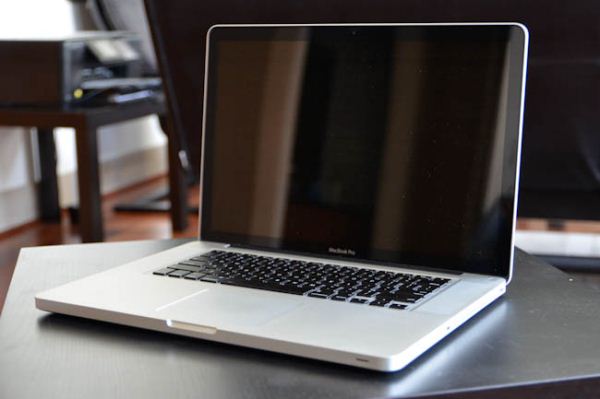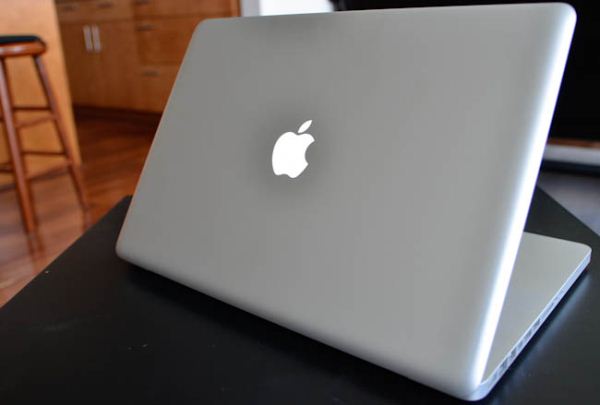The 2012 MacBook Pro Review
by Vivek Gowri on July 18, 2012 2:00 PM EST- Posted in
- Mac
- Apple
- MacBook Pro
- Laptops
- Notebooks
The 2012 MacBook Pro is a pretty intriguing product. It’s the latest and last in a line of standard-setting notebooks that helped shape the direction of the notebook industry over the last 5 years. This design has been around for a while, accompanied by the same general specsheet formula: the latest Intel processors, a performance-class GPU, a high quality display panel, and a $1799 starting price. These things haven’t changed since the original Intel MacBook Pros from 2006 (with the exception of the odd low-end 2009 MBP15, which started at $1599 and came with an Nvidia 9400M IGP).
The unibody MacBook Pro is one of the best engineered portables around, and the longevity of the design speaks to that. But at this point, it’s an aging design. Nearly four years in, the design has endured well, but it retains features that are starting to matter less and less - a DVD drive, Firewire, an IR window for the remote that hasn’t been included with new Macs in years. Possibly even Ethernet. I know some of our editors and readers rely on having an Ethernet connection, but I personally haven’t plugged an RJ45 jack into a notebook in years. Like, five or six years. You can see that Apple agrees - the Retina MacBook Pro has none of those things. The optical drive has been unceremoniously dumped, as has the IR port. The Firewire port and Ethernet jack have been traded for a second Thunderbolt port and an HDMI out (finally, HDMI comes to Macs - hooray for no longer needing those infernal adapters!). Based on my usage model, I make that trade twelve times out of ten. Two ports I never use for one I use regularly and one I will use going forward, and becomes worth more as more Thunderbolt accessories become available.
And when you think about it in those terms, you see where the normal 2012 MBP is flawed - it’s a design that’s rooted in the past, a four year old design with a one year stay of execution. That normally wouldn’t be a problem, but with the future being sold alongside it, it becomes a much more difficult sell. Especially when you consider this: if you were to buy the base 15” MBP and upgrade to a 256GB Samsung 830 SSD and 8GB memory (bringing it to spec-parity with the base rMBP), you’d be approximately $100 shy of the rMBP pricing. That’s $100 for a smaller, lighter notebook that’s just as fast and has a *significantly* better display. If you’re eligible for student discount, that difference is actually zero, because the rMBP has a greater student discount than the base MBP15. The rMBP is pretty pricey, but when you think about it, it’s a pretty good deal.
There are only a few legitimate reasons I can think of to skip the rMBP and get the MBP15, with the most reasonable of them being that you’re very fundamentally opposed to the soldered memory and custom SSD form factor. Another is if you’re highly dependent on a DVD drive and Ethernet and don’t want to pay for or carry around an external SuperDrive or GigE adapter. Or, you have a hard-set $1800 budget and simply don’t care about an SSD, extra memory, or having a good screen (or plan to upgrade them later).
But here’s my take – the 2012 MBP is a great notebook and a very solid portable system. I just don’t want one. For my money, I’ll either save some and get a discounted 2011 MBP15 or spend a bit more to step up to the Retina. And maybe this is telling, but as soon as I was done with the benchmarking and the major part of the writing for this review, I stopped using the MBP and picked up a base Retina. It’s the future, simple as that.












132 Comments
View All Comments
Sunburn74 - Thursday, July 19, 2012 - link
What? you have to buy something in order to be able to rightfully criticize it these days?stimudent - Friday, July 20, 2012 - link
Another overpriced Apple product.stimudent - Friday, July 20, 2012 - link
Anything that gives us an alternative to Windows is a good thing. Now if only we could get away from Intel chips.Hendrix248 - Saturday, July 21, 2012 - link
Never heard of Linux? Why would you want to move away from the best chips on the market?Belard - Wednesday, July 18, 2012 - link
As another has posted, its a standard design.... and it is a bit expensive. A ThinkPad T500 with the same specs that comes out of the same FOXCONN company sells for several hundred dollars less.okay, where is the full review on the Motorola Atrix HD?!
Belard - Wednesday, July 18, 2012 - link
By the way... a physical Ethernet port is still very handy for those times when you cannot get WIFI... there are some hotels/motels who are still wired. Or if you are at a location or family place where the WIFI fails or they lose the WiFi Password.Or you are at a clients place and need quick access and they don't want to give your wifi access.
inplainview - Thursday, July 19, 2012 - link
It has Ethernet over Thunderbolt....Hendrix248 - Saturday, July 21, 2012 - link
After you buy the adapter...Grok42 - Sunday, July 22, 2012 - link
Wi-Fi is great for quickly connecting to the Internet and other casual usage but I think apple has really underestimated the need for a wired connection, at least with current Wi-Fi tech. The problem with Wi-Fi is that it has a MUCH higher latency than a wired connection. This is important for voice, video or remotely viewing desktops. Wi-Fi is also very prone to dropping connections if for only a split second. You would never notice when browsing the web as the connection is stateless. However, if you use any networking services that won't survive a dropped connection it can be frustrating. These services include copying files, SSH, RDP, VNC, etc.Probably the biggest need for Ethernet is when dealing with large files. I can transfer a 15GB file from our servers in a few seconds with a gigabit Ethernet port. I have had it take hours to copy the same file over Wi-Fi. That is unless the signal drops at which point you will want to throw things when you have to start over again.
It seems that Apple or someone should be working on standardizing a slimmer version of the RJ-45 connector. Dongles go against everything Apple stands for on the design side.
sandro - Tuesday, July 24, 2012 - link
This is something I have been wondering since some time. What is in the way of standardizing a slimmer RJ-45 connector? Adapters would be so inexpensive that they could be included with the product. I wonder why Apple went this way instead of making a thunderbolt to ethernet dongle, which by construction costs quite some money and takes away one (to become) precious port.